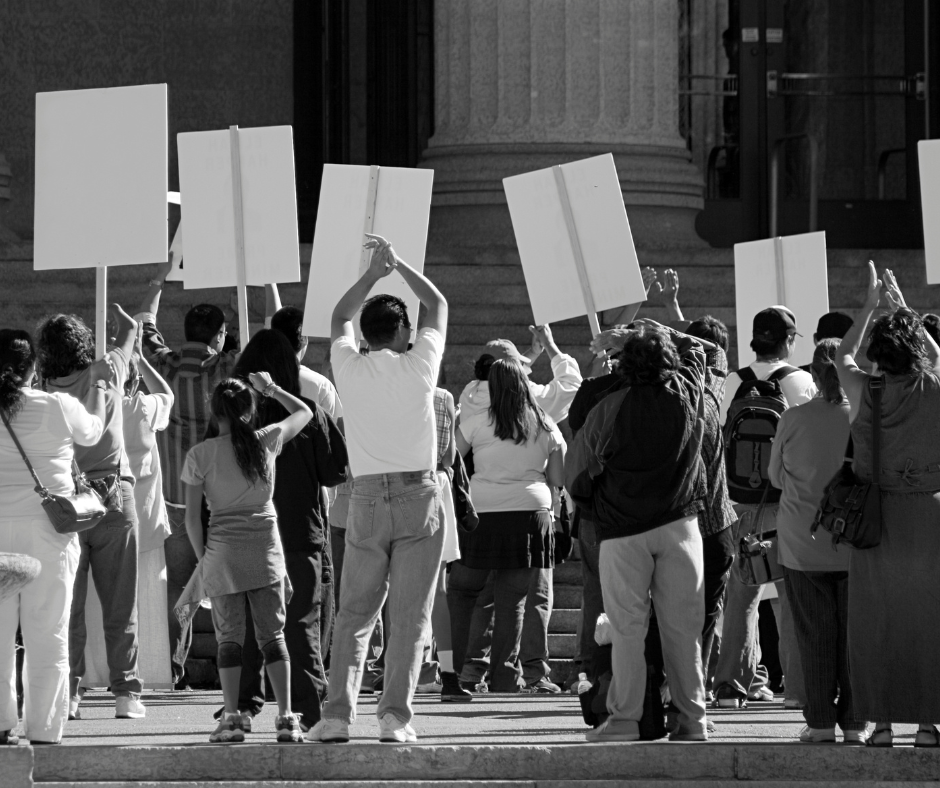
Employee and labor relations play a pivotal role in shaping a successful organization. But, how do these relations impact the workplace dynamics? Let’s embark on a journey to explore the critical aspects of employee and labor relations, uncovering how they can transform the workplace environment, foster employee satisfaction, and ultimately improve overall business performance.
Key Takeaways
- Employee and labor relations involve the intricate web of interactions between employers and employees.
- HR professionals are responsible for managing employee and labor relations, through understanding labor laws, promoting collaboration & providing career development opportunities.
- Best practices for maintaining healthy employee/labor relations include open-door policies, efficient communication & training/development opportunities to create a positive work environment.
Employee Definition
An employee definition encompasses the formal identification and classification of individuals engaged in a professional capacity within an organization. The term “employee” refers to an individual who is officially hired by a company, typically under a contractual agreement, to contribute their skills, time, and effort in exchange for compensation. This designation implies a structured relationship between the employer and the employee, outlining roles, responsibilities, and expectations. The employee definition is crucial for legal and organizational purposes, establishing the rights and obligations of both parties. It serves as the foundation for various employment-related matters, including benefits, performance evaluations, and workplace policies. Understanding the employee definition is fundamental for maintaining a harmonious and compliant work environment.
The Core Concepts of Employee and Labor Relations
Employee and labor relations encompass the complex web of relationships between employees and employers, including contractual, practical, and emotional connections. These relations are vital for creating a pleasant work environment, which in turn affects employee loyalty and productivity. A thorough grasp of the delicate balance between employee and labor relations can empower employers to yield higher returns on investments in both production facilities and job satisfaction.
Delving deeper into the distinctions between employee relations and labor relations uncovers their unique roles in shaping the workplace.

Employee Relations
Employee relations focuses on individual relationships between employees and their employer, addressing any work-related issues and concerns. It aims to foster a positive relationship within the organization, acting as an initial resource to help resolve conflicts and maintain a healthy work environment. Trust, a vital component in employee relations, allows employees to:
- Exercise autonomy in their decisions
- Feel supported and valued in their work
- Communicate openly and honestly with their employer
- Have confidence in the organization’s leadership and policies
By prioritizing employee relations, organizations can create a positive and productive work environment for their employees.
The Employee Relations unit offers consultation and counsel on various human resources matters, such as performance management, corrective actions, and interpreting policies and procedures. Understanding a company’s long-term objectives improves employees’ ability to align their activities with these goals.
Labor Relations
Labor relations, on the other hand, deal with the collective relationship between employees, their unions, and the employer. This includes the role of labor organizations, such as labor unions, which are formed by employees to safeguard their rights and benefits. Labor relations play a significant role in a company’s success by promoting comprehension and facilitating expeditious resolutions to matters such as arbitrations and grievances.
Labor Relations Managers, also known as labor relations specialists, have a range of duties, including grievance and complaint administration, conflict management, and policy interpretation. A deep understanding of labor relations’ nuances enables managers to traverse the complexities of negotiations and agreements, fostering a harmonious and productive work environment.
The Role of HR Professionals in Managing Employee and Labor Relations

Human resources (HR) professionals play a crucial role in managing employee and labor relations. It is imperative for HR managers to comprehend labor relations and how it influences their responsibilities and the personnel they manage. Their knowledge of labor laws is essential for safeguarding both the organization and the worker during collective bargaining and grievances.
HR contributes to the establishment of positive employee relations by:
- Constructing cross-functional teams
- Stimulating social interactions
- Executing team-building activities
- Attending to employees’ needs and concerns
Implementing effective HR strategies enables organizations to foster a harmonious and productive work environment, benefiting both employees and employers.
Building a Positive Work Environment Through Effective Employee and Labor Relations

A positive work environment is crucial for fostering employee engagement, loyalty, and productivity. Employing effective employee and labor relations strategies, such as:
- promoting collaboration
- encouraging open communication
- providing opportunities for professional development
- recognizing and rewarding employee achievements
can cultivate a positive work environment. A healthy workplace culture helps prevent workplace disputes and enhances a company’s brand image, ultimately yielding positive customer experiences.
Organizations can enhance employee and labor relations for a productive work environment by:
- Establishing a welcoming onboarding process
- Providing consistent positive feedback
- Enhancing communication
- Offering career development opportunities
- Making employees feel valued by emphasizing company values and mission
These strategies not only contribute to employee satisfaction but also pave the way for a successful business by helping to create rapid solutions.
Navigating Labor Laws and Regulations

Understanding and adhering to labor law and regulations is of utmost importance to protect the rights of both employees and employers. In the United States, primary labor laws and regulations include the Fair Labor Standards Act (FLSA), which governs minimum wage, overtime pay, child labor, and recordkeeping. Compliance with these laws ensures equitable treatment and prevents exploitation, as well as avoiding any unfair labor practice.
The Fair Labor Standards Act (FLSA) influences employer-employee relations by instituting minimum wage, overtime pay, recordkeeping, and child labor standards, thereby helping to prevent unfair labor practice charges.
Employee management software can assist organizations in adhering to labor laws by providing pertinent information and data to identify areas of concern and take proactive measures to prevent future difficulties.
The Collective Bargaining Process: Understanding Agreements and Negotiations

Unions play a critical role in the collective bargaining process, acting as representatives of workers and negotiating with employers on their behalf. Through collective bargaining, unions strive to secure higher wages, better benefits, and improved working conditions for employees. This process involves exchanging proposals, discussing ideas, and collaborating to resolve issues, ultimately leading to a written agreement outlining the terms and conditions of employment.
Common tactics utilized during collective bargaining negotiations include:
- Making extreme demands followed by small concessions
- Utilizing commitment tactics
- Controlling the agenda
- Employing integrative or distributive negotiation approaches
A deep understanding of the collective bargaining process enables organizations to create collective bargaining agreements that mutually benefit employees and employers.
Recruiting Employees
When it comes to recruiting employees, organizations need to strategically align their efforts to attract the right talent. Successful companies recognize the importance of clearly defining job roles and responsibilities, as this clarity sets the foundation for an effective recruitment process. Understanding the specific skills and qualities required for each position is crucial in identifying candidates who not only meet but exceed recruiting employees expectations. Utilizing diverse channels, from job boards to professional networks, plays a key role in casting a wide net for potential candidates. Additionally, fostering a positive employer brand can significantly enhance the success of recruiting employees, as it creates a favorable impression that attracts top-tier talent to the organization.
Addressing Workplace Disputes and Grievance Processes

Workplace disputes and grievance processes involve addressing conflicts between employees and employers and ensuring equity in the resolution process. A typical grievance process involves the following steps:
- Submission of a formal, written complaint
- Formal investigation
- Meeting to discuss the grievance
- Decision based on the findings
Conflict resolution in the workplace involves the following steps:
- Understanding the conflict
- Examining potential alternatives
- Engaging in active communication and listening
- Identifying areas of agreement
- Discussing possible solutions
- Determining methods to achieve shared goals.
Ensuring fairness and transparency in grievance processes fosters trust and maintains a positive work environment within organizations.
The Impact of Unions on Employee and Labor Relations

Unions serve as a means of safeguarding employee rights and benefits. However, unionization can be expensive for companies, as it typically increases the cost of labor substantially and limits companies’ flexibility. Maintaining healthy employee relations and labor relations in non-unionized companies is of great importance, as it can prevent workers from seeking unionization.
Fostering a supportive work environment and offering opportunities for collaboration and concept sharing enables organizations to:
- Create a positive atmosphere
- Increase employee engagement
- Improve employee satisfaction
- Increase retention rates
This approach helps to mitigate the potential negative impacts of unionization on employee and labor relations.
Enhancing Employee Satisfaction and Retention Through Effective Relations

Employee satisfaction and employee retention can be improved through effective employee and labor relations strategies, creating a supportive work environment. Fostering a supportive work environment allows for chances for collaboration and concept exchange, empowering personnel, and constructing a robust corporate culture. Effective communication plays a significant role in improving employee satisfaction and retention by encouraging open dialogue, sharing company objectives and values, and fostering trust.
Implementing effective employee and labor relations strategies can result in a positive work environment, leading to enhanced employee engagement, satisfaction, and higher retention rates. This not only benefits employees but also contributes to the overall success of the organization.
Training and Development Opportunities for Managers and Supervisors

Given their crucial role in managing employee and labor relations, equipping managers and supervisors with necessary training and development opportunities is paramount for enhancing their skills. Essential training programs include courses on developing and maintaining productive labor and management relations, supervisor training to deter unionization, and employee relations trainings.
Professional development opportunities, such as training programs offered by the Office of Personnel Management (OPM) and online courses provided by institutions like the University of Massachusetts Global, can help managers enhance their skills in managing employee relations and creating a positive work environment. Continuous professional development assists supervisors in establishing credibility and trust with employees, essential for successful labor relations management.
Best Practices for Maintaining Healthy Employee and Labor Relations

To maintain healthy employee and labor relations, organizations can implement best practices such as:
- Open-door policies: promote open communication, feedback, and discussion, creating an environment where employees feel valued and encouraged to share their concerns, ideas, and feedback.
- Efficient communication: ensures that all parties have the same information and understand their obligations and duties, fostering trust between management and staff.
- Training and development opportunities: provide employees with the skills and knowledge they need to succeed in their roles, while also showing that the organization values their growth and development.
These practices can help create a positive and productive work environment, leading to better employee satisfaction and engagement.
Training and development courses for managers and supervisors can encompass topics such as conflict resolution, communication, and leadership. These courses can provide managers and supervisors with an understanding of their duties and how to effectively manage and motivate their teams. Implementing these best practices allows organizations to foster a positive work environment, ensuring their business’s long-term success.
Summary
In conclusion, cultivating healthy employee and labor relations is essential for the success of any organization. By understanding the core concepts of employee and labor relations, leveraging HR professionals’ expertise, and implementing best practices, organizations can create a positive work environment that fosters collaboration, communication, and employee satisfaction. By investing in training and development opportunities for managers and supervisors, businesses can ensure that they have the skills and knowledge necessary to navigate the complexities of employee and labor relations effectively. Ultimately, these efforts contribute to the overall success of the organization and the well-being of its workforce.
Employee Vs Staff
When considering the dynamics of a workplace, it’s crucial to delve into the nuances of “employee Vs staff.” While the terms are often used interchangeably, they carry distinct connotations within organizational structures. An employee typically implies an individual contracted for a specific role, often on a long-term basis, contributing to the core functions of the company. On the other hand, the term “staff” is broader and encompasses all personnel, including both employees and other support roles. Understanding these distinctions is pivotal in establishing clear communication channels and delineating responsibilities within the organizational framework. In essence, the nuances between employee vs staff play a pivotal role in shaping the dynamics and functionality of any workplace.
Frequently Asked Questions
What are employee and labor relations?
Employee and Labor Relations refer to the contractual, practical, and emotional connection between employers and their employees. They work to prevent and resolve issues affecting employees in work situations, recognize employees for service contributions, provide assistance with professional growth, interpret and implement policies, and investigate and respond to grievances and complaints.
What is the difference between HR and labor relations?
HR management focuses on managing the employee life cycle, while Labor Relations consists of advising and assisting employees on work rules, employment laws and legal issues. HR should train all employees on employment laws, while Labor Relations represent the adversarial positions of employers and union employees in a union workplace.
What are examples of labor relations?
Examples of labor relations include union organizing, collective bargaining, strikes, grievance and complaint administration, conflict management, arbitrations, and policy/contract interpretation.
What is the primary difference between employee relations and labor relations?
Employee relations focus on the relationship between employers and employees, whereas labor relations involve the connection between labor organizations, like unions, and employees.
How can effective employee and labor relations strategies contribute to a positive work environment?
Effective employee and labor relations strategies, such as promoting collaboration and communication, can create a positive work environment that encourages engagement, satisfaction, and productivity.